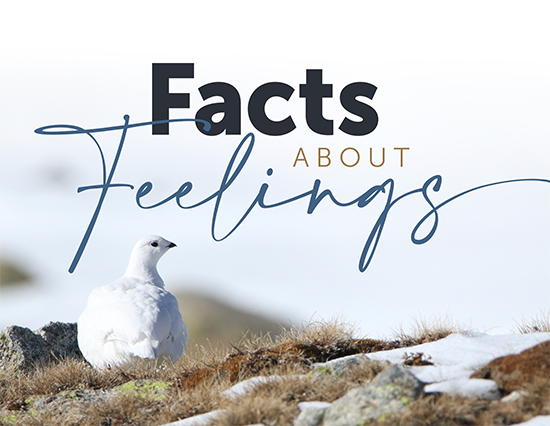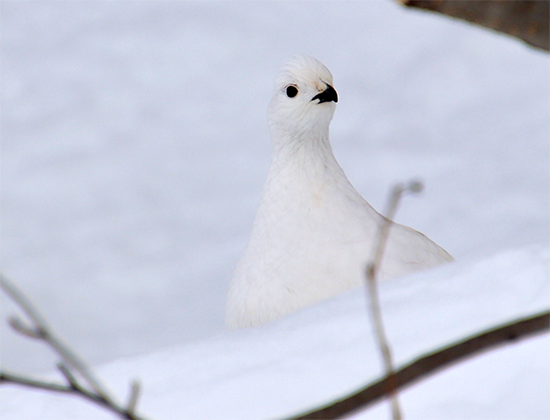
June-July 2023
All Together Now
------------------
|





Facts About Feelings
By Brenda J. Evans
A friend recently said, “Feelings are not facts.” I agreed because she’s a good and
wise friend, but later, I questioned the statement. After we each went on our way,
I couldn’t let go of the feeling that, somehow, my good friend was dead wrong.
Often, feelings feel like facts. Even the most negative feelings can seem supported by evidence and genuinely threatening, not imagined. But social scientists and psychologists assert our normal tendency is to accept the most extreme version of pain, injury, or disaster. The most extreme version may not be the true version. In addition, there’s our usual “confirmation bias,” the tendency of ours to look only for whatever confirms what we’re already thinking.
Fear is an example. It’s a strong emotional motivator that often drives me to feel edgy, tense, or anxious. I am also a not-proud-of-myself worrywart. Too often, I plant “worry seeds” and go on to water, cultivate, and grow them into a thriving field of what-ifs. What if this, what if that—on and on, until my fear feels warranted, whether it is or not.
Consider the Alaskan willow ptarmigan. In winter, the ptarmigan’s best protection against arctic wolves and gyrfalcons is white feathers on white snow. In a threat, a flock of ptarmigans scatter, each skittering alone across the snow to a solitary place. The lone ptarmigan’s next move is no move—absolute stillness. Outwardly, she freezes, crouching with head down, eyes open, and simply waiting. Inwardly, her heart rate and respiration increase.
Scrub trees in arctic tundra give no substantial protection or defensive shelter, so the ptarmigan counts on her white feathers and stillness to hide her in the snow. She avoids flight because she’s too halting. When aloft, she limps and stammers through the air. On the ground, she skitters well. Her feathery feet become winter “snowshoes,” nearly doubling foot surface, so she runs, hunkers down, and waits. When it turns night, she flutters a short distance and burrows her way into the snow, alone and safe in her private snow cave.
Run, stay invisible, keep still, burrow: these are the ptarmigan’s way of dealing with fear.
I understand hunkering down, burrowing, staying invisible. Heart racing, gasping for air, trying not to give myself away—trying not to show I’m secretly scared to death. I even try to flutter and claw my way into a cave to stay safe, to avoid people’s prying questions, admonitions, or condemnations. To keep off their radar. To be strong and courageous—to be a “snow chicken” which is what some people call the ptarmigan.
I say try because I’m not certain I would make a good snow chicken. I’m no good at going it alone like the ptarmigan—skittering away from the flock, counting only on herself, white feathers, and the God-given white snow.
While my mind tells me I have a deep streak of independence—or at least the desire for it—my heart says I have a much deeper streak of fear. This is especially true when it comes to isolation and its menacing sidekick, loneliness. Together, they feel like a bottomless chasm I might stumble into. Add the statistical warnings that many of us married women will live our final years alone.
Indeed, I already number more widows than widowers among my friends. And that’s a fact!
In January, I got a notice from my retirement fund with a “life expectancy divisor” for 2023 used to calculate my required minimum distribution for the year. It was 19.4. At first, that figure didn’t even make me blink. Then I looked at it again and blinked twice. Next, my jaw dropped about six inches. Finally, I asked my husband Bill if I understood the figure correctly. He said I did.
As of this year, my retirement fund is prepared to send me retirement money for another 19.4 years—until I’m 99 and a half. Fear raises its head when I think about that. Actually, it’s worry. How many long years might I go on alone? Bill’s life expectancy is shorter; plus, he’s older than I am. Can I be a determined “snow chicken” and go on alone? I don’t know. Many of my friends are “snow chickens”—going on alone, I mean. And that’s a fact.

Bottom line: I need factual and biblical ways to analyze and deal with my feelings. Here are four.
Feelings are often as unstable as sand. They move and shift, or become fixations that fling us up, then fling us down. The author of a recent memoir bragged she was among those who “worry well.” She is a knitter and used the word unraveling both as a metaphor for worry and as a literal practice she sometimes uses to correct bad stitches. To her, worry (even if it means emotionally unraveling) is a good thing. I have not found this to be true.
For me, worry is an addictive nuisance, but even worse, a destructive habit and often a sin. If you think about it, worry is usually centered around the desire to control the future and make it happy, trouble-free, and 100% good. My worry won’t, and can’t, do that. In my better moments, I remember what Jesus said: “In the world ye shall have tribulation: but be of good cheer; I have overcome the world” (John 16:33b). He governs the world and my life for good. I don’t. But His governance is for ultimate good, not so that everything happening to me now is good. That’s what Romans 8:28 means. That’s a fact.
Feelings often look at life through a false loupe. A loupe is the small magnifying device used by jewelers, watchmakers, dentists, and many others to see details closely and clearly. It’s held close to the eye—generally one eye only. A false loupe is flawed, clouded, or distorted and gives an untrue view.
Feelings are often a false loupe. They cloud, skew, or misrepresent facts. When I feel cranky, what I see through my one-eyed loupe may be fouled up. All the world looks mean, malevolent, or uncaring. Remember Saul’s warped feelings for David the musician? He was looking through a false loupe and threw javelins as a result. Let’s not throw javelins. That’s a fact.
Feelings are a good and gracious gift from God. Authors Carolyn Manahey and Nicole Whitacre said it this way:
Our wise Creator embedded emotions into our humanity…and when He surveyed His creation and called it good, He didn’t mutter under His breath, ‘except for emotions!’...Just as our minds enable us to think, and our wills enable us to choose, so our emotions enable us to respond.
That’s a fact.
God gave us feelings because He Himself is a feeling God. Our emotions are made in our Creator’s image (Genesis 1:27). Yahweh expressed anger, grief, sadness, frustration, love, and even jealousy throughout the Old Testament. Jesus’ life was messy. Emotionally, He was jerked this way and that—so much love and joy, disappointment and grief. Then there is the Holy Spirit and the fruit He wants to grow in us—nine kinds in Galatians 5:22-23 alone—most of them holy, emotional fruit to feed and nurture our spiritual lives. That’s a fact.
What can we do about our feelings?
-
Acknowledge they are good but may be flawed and not based on facts.
-
Manage and rule over them, not them over us. Avoid knee-jerk responses. Refuse scattered black thoughts and untidy emotional clutter. Practice Philippians 4:8.
-
Pray with Zephaniah: “Quiet me, O Lord” (3:17). Or pray with David and other Psalmists, or the many prayers of Paul in his letters. Stay open to Paul’s prayer words. Let them affect your heart of hearts.
-
Cling to the fact of who Jesus is. As author Karen Sargent says, “He is all-knowing when I don’t know, all-powerful when I am powerless, and ever-present when I don’t feel Him.”
That’s a fact. May we never forget it.
About the Author: Brenda Evans and Bill, her husband of 60 years, live and work on the banks of Rockhouse Fork in Ashland, Kentucky. Contact her at beejayevans@windstream.net. |
|

